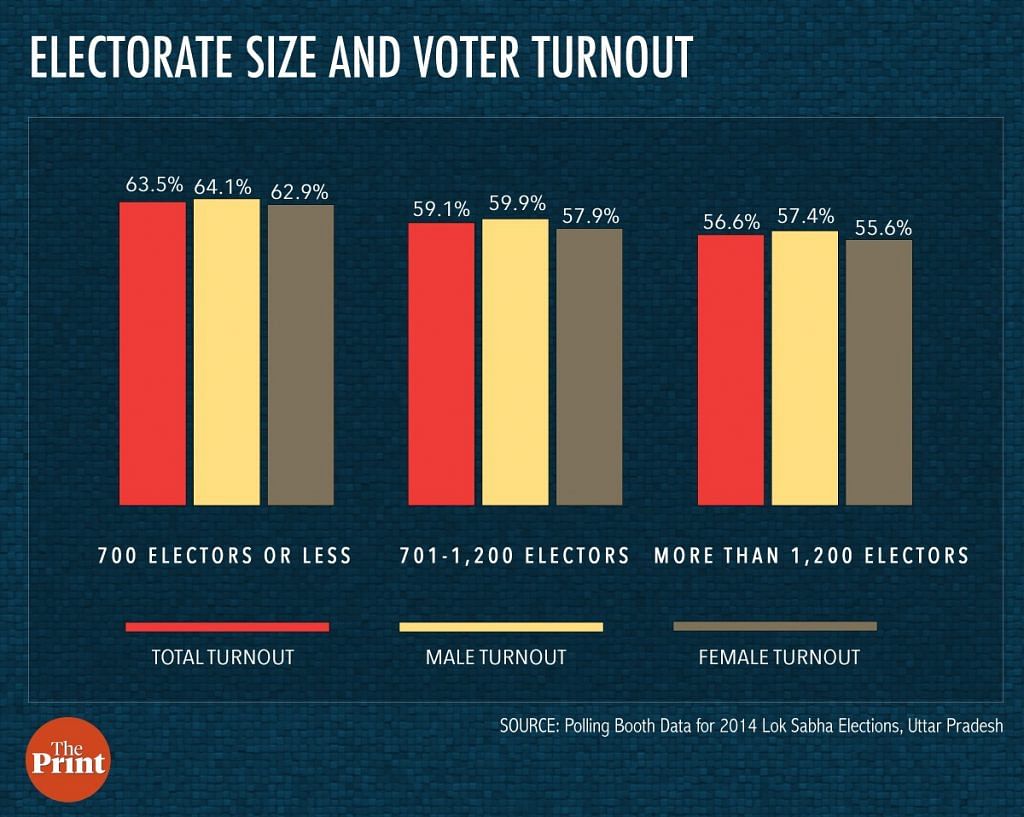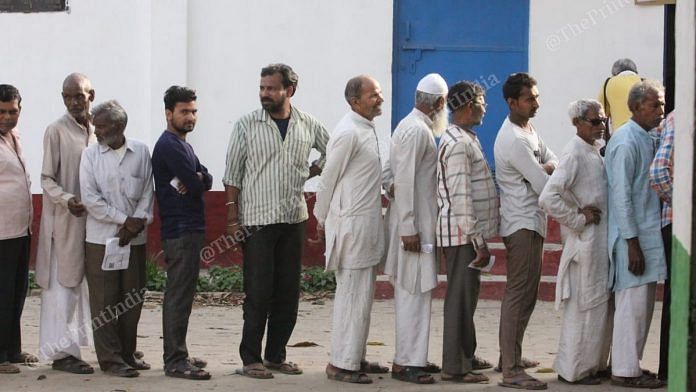The Election Commission of India has long engaged in efforts to increase voter turnout. It makes an extra effort to identify sensitive polling booths and ensures the safety of voters as they come out to cast their ballots; it revises electoral rolls in a very timely manner; and it runs a fairly extensive voter turnout programme entitled SVEEP or Systematic Voters’ Education and Electoral Participation. While these efforts have borne fruit, there are simple institutional reforms that will increase voter turnout.
In our research, we found that voter turnout is lower in polling booths with a larger electorate and when multiple polling booths are located within one polling centre.
Higher the number of electors, lower the turnout
The Election Commission of India (ECI) has set a limit on minimum and maximum voters for each polling booth. According to the ECI, no polling booth should have less than 300 eligible voters or more than 1,200 (1,400 in urban areas) eligible voters anywhere in the country.
We analysed voter turnout for the 2014 Lok Sabha elections in Uttar Pradesh – for all 1.3 lakh polling booths. We found significant variation in the size of polling booths across the state. One-fifth (19 per cent) of the booths had less than 700 electors while a little more than one-fourth (27 per cent) had more than 1,200 electors. We divided the polling booths into three categories – those with less than 700 voters, with 700 to 1,200 voters, and those with more than 1,200 voters.

As we show in Figure 1, the bigger the number of registered voters in a polling booth, the lower the voter turnout. Turnout in polling booths with less than 700 electors is 63 per cent, which falls to 59 per cent for booths with more than 700 electors but less than 1,200 electors; and in booths with more than 1,200 voters, the turnout drops to just over 56 per cent. In other words, turnout in the smallest polling booths was 7 per cent higher than the turnout in the largest polling booths. This pattern holds for male and female voters.
It is not only the size of the electorate that matters; the number of polling booths in one polling centre can dampen voter turnout as well.
Also read: 3 charts challenge lazy thinking on voter turnout and its link to literacy & urbanisation
Polling centres with multiple booths have lower turnout
The Election Commission of India has well defined guidelines about which type of buildings can be used as a polling booth and the maximum distance of a polling booth from a voter’s home. There are two types of polling centres – single booth or multiple booths. We found this difference when we analysed data from polling booth level turnout in Banda district of Uttar Pradesh (where we are engaged in a study of increasing turnout through voter mobilisation) for the 2017 assembly election. Voter turnout in single booths was approximately 63 per cent. This was almost 5 percentage points more than the average turnout in polling stations located at centres with multiple booths (58 per cent). This difference was consistent across all four assembly segments in Banda district. Our very preliminary analysis of the 1.3 lakh polling booths across Uttar Pradesh for the 2014 parliamentary elections and the 2017 assembly elections shows similar results.
Also read: 3 charts challenge lazy thinking on voter turnout and its link to literacy & urbanisation
Why is voter turnout lower in polling centres with multiple booths? During our fieldwork, we observed that single booths are generally located very close to the habitation area of a village or locality. When multiple booths are located at a single polling centre, the catchment area of a polling booth is often large panchayat with several small habitations located at some distance from the polling booth. While the prescribed norm of two-kilometre distance of a polling station from a habitation is closely followed by the election officials, it may be enough to deter some to go to the polls, especially the elderly, the infirm, or women.
Also read: Mumbai breaks jinx of low voter turnout as four of six seats cross 50% mark
While the turnout rates in the 2019 Lok Sabha elections seem to be very close to the previous level, it is clear that the gains made through the ECI’s SVEEP programme have exhausted its limit. The ECI can make some simple changes in its institutional design – make smaller polling booths each of which is not co-located with other polling booths within one polling centre – to further increase voter turnout.
Pradeep Chhibber and Pranav Gupta are at the University of California at Berkeley, US. Rahul Verma is a Fellow at the Centre for Policy Research. Views are personal.



